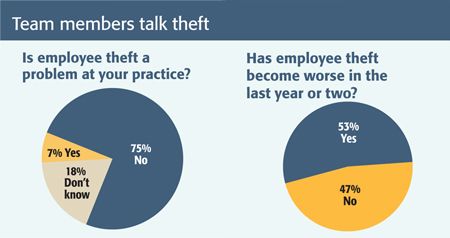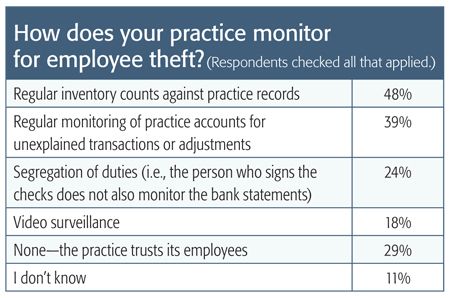Stop the stealing: Your role in preventing employee theft
Theft and embezzlement are on the rise. Are you doing everything you can to make sure your practice isn't affected?
When times are tough, people tend to do what’s necessary to survive. So it should come as no surprise that during a rough stretch in our nation’s economy, theft in the workplace is going up. According to Sheila Grosdidier, BS, RVT, partner with VMC Inc. in Evergreen, Colo., this increase in veterinary practices is dramatic—and many practice owners aren’t sure how to deal with it.
“Recently, I consulted with a clinic that had lost $125,000 in a year due to an employee’s embezzlement,” Grosdidier says. “And the practice owner actually wondered if he should fire her. He was embarrassed to admit that someone could take advantage of him.”
So what’s your role as a veterinary team member? First: Don’t steal from your practice, unless you’re prepared to lose your job and potentially go to jail. But you also have a responsibility to watch for signs of theft among your co-workers and report them to the practice owner—assuming the behavior is harming the practice and you’re certain the employee is at fault. After all, you work closely with these people every day, and you’ll be one of the first ones to spot when something doesn’t seem right. Trust your gut, Grosdidier says—most of the time, it’s correct.
The complete package:
Your role in preventing employee theft
Is employee theft a problem at your practice?
How does your practice monitor for employee theft?

Data source: 2010 Firstline Team Trends Study
The complete package:
Your role in preventing employee theft
Is employee theft a problem at your practice?
How does your practice monitor for employee theft?

Data source: 2010 Firstline Team Trends Study
The complete package:
Your role in preventing employee theft